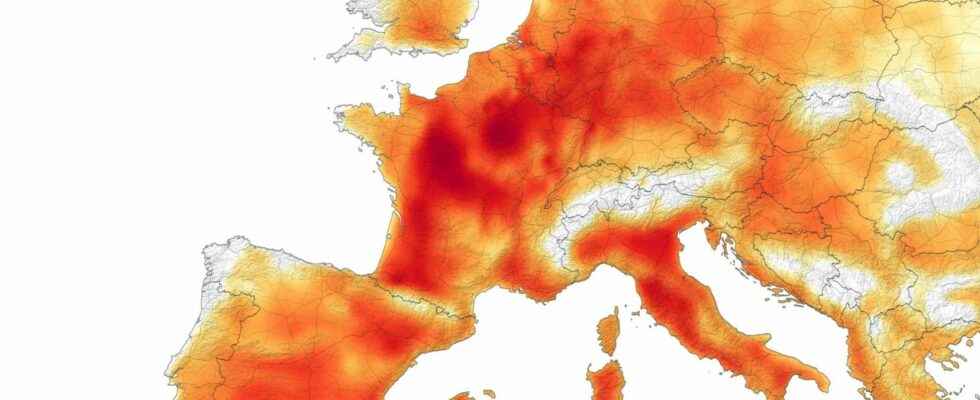A study reveals that Western Europe has been one of the areas of the world most affected by heat waves for 40 years. This region of the world is warming 3 to 4 times faster than others located at the same latitudes in the northern hemisphere, due to a change in the level of the jet stream.
You will also be interested
[EN VIDÉO] Climate change: how to protect our cities from heatstroke? To limit temperatures in urban areas during summer heat waves, this question must be considered right from the design of developments, residential or business buildings, roads, traffic plans, etc. A European study program, Urban Fluxes, lays the groundwork for better building the cities of tomorrow.
Of the heat waves more and more intense, and more and more frequent in Europe, this is the conclusion of a study published in the review Nature July 4, 2022 : Europe has become a veritable hot spot heat waves for the past 42 years. While California heat and droughtoften make the news, researchers estimate that Europe is warming faster than the American West and other regions of the world at the same latitudes in the northern hemisphere. Over the past 42 years, the authors of the study have in fact estimated that Europe has warmed up 3 to 4 times faster than these regions! Scientists point out that the waves of European heat increases in a “disproportionate” way compared to the global warming of the Planet and that the exact causes are still poorly known. The waves of heat are increasing at the rate of 0.61 more days per decade in Europe, compared to 0.21 more days of heat for other regions located at the same latitudes, i.e. 3 times faster.
A double jet stream associated with heat waves
The study confirms a hypothesis put forward a few years ago: the atmospheric circulation has been modified, and there is a real link between the state of the jet stream and heat waves. The position of this corridor of wind which circulates from west to east over the northern hemisphere influences the position of theair hot, and its blocking on Europe. It happens that the jet stream splits in two at the level of Eurasia (the land of Europe and Asia), a “double jet”, and this separation in two seems to be more and more frequent according to the authors of the study. The presence of double jets would be associated with almost all recent heat waves and heat waves, such as those of 2003, 2018, 2019 and 2020.anticyclones that trap warm air over Europe would therefore occur between the northern and southern undulations of these two jets.
The increasingly frequent presence of blocking situations weather report, associated with persistent anticyclones over Europe, is almost systematically linked to a double jet structure in the troposphere above Eurasia. This double jet moreover affects three main areas more strongly: Western Europe first, then Eastern Russia, Western and Eastern Siberia.
Western Europe is one of the areas most affected by global warming
While Europeans feel less concerned by the global warming than other regions of the world, the study published in Nature confirms the fact that Western Europe, including France, is in fact one of the areas most affected by climate change and that the trend will strengthen over the next few years. The climate forecasting models indeed predict, for the most part, warming scenarios in which the anticyclones would be more and more persistent over Western Europe, up to the British Isles, favoring increasingly dry weather. and hot.
Interested in what you just read?
